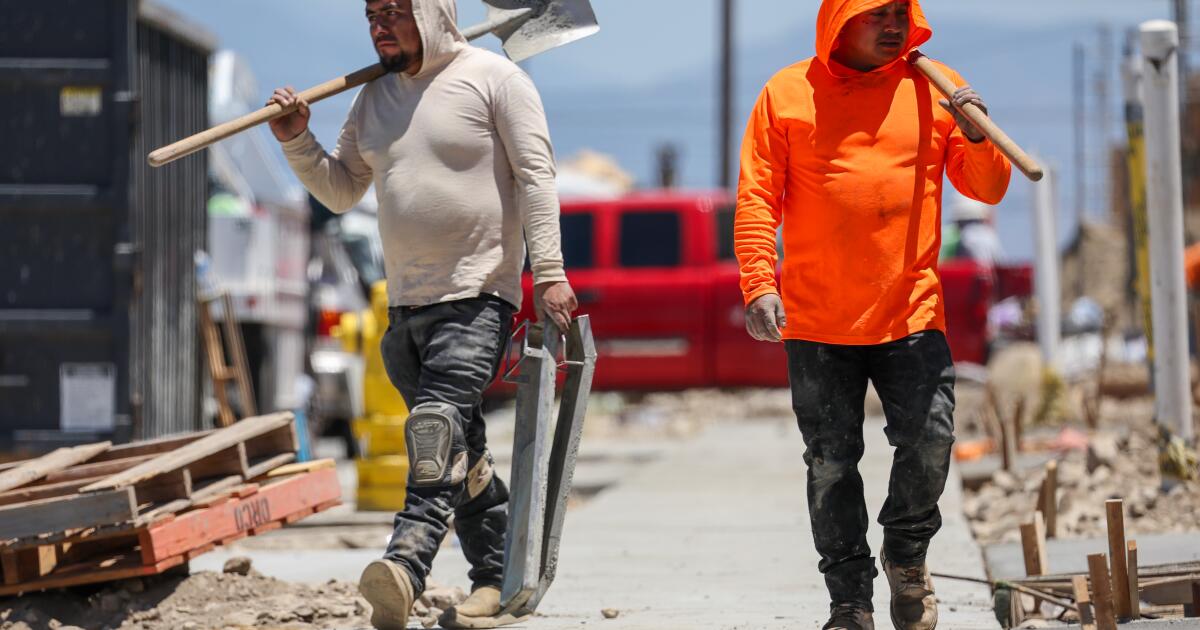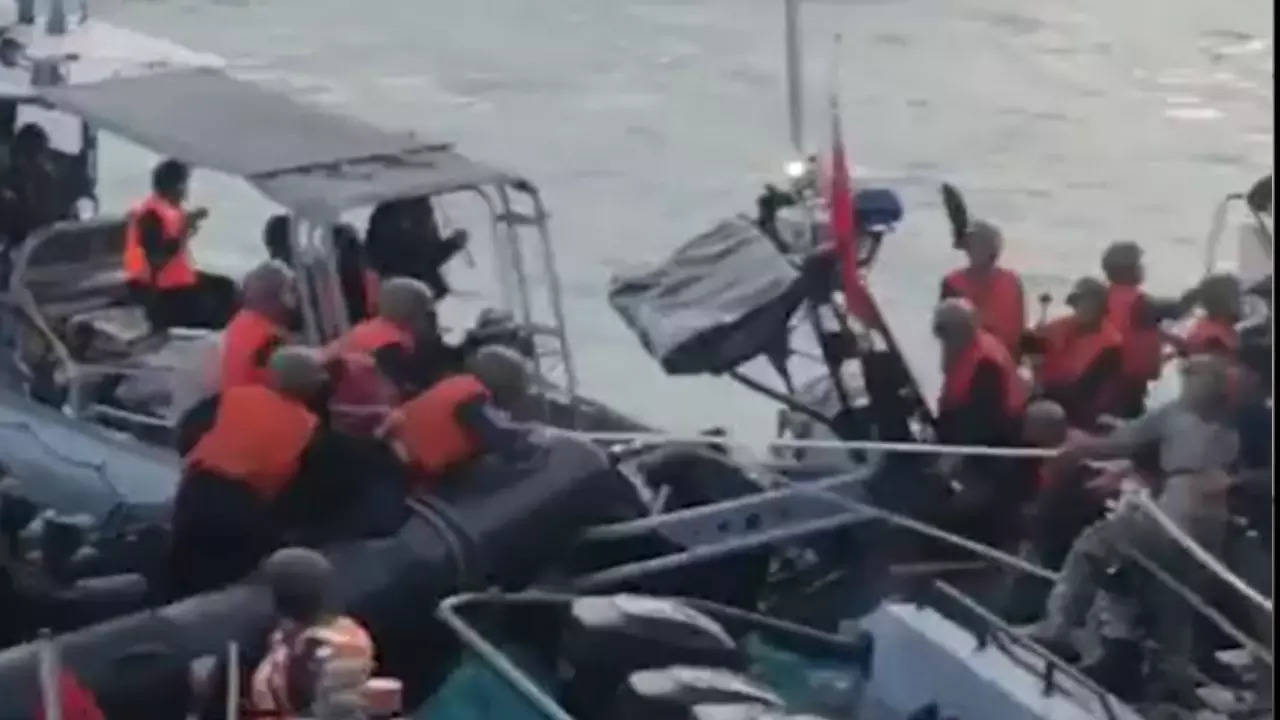The Philippines Armed Forces described China’s June 17 actions — which included throwing stones and stabbing an inflatable vessel trying to resupply its forces — as a “brutal attack” and said the Chinese sailors behaved like pirates.The US State Department said China’s actions were “reckless” and threatened regional peace and stability.
But public reaction was limited to this, with neither the Philippines nor Washington wanting to escalate a crisis that had been brewing for years.
For now, at least, Manila appears to be exercising more caution.
President Ferdinand Marcos Jr. later told troops in a speech that their job was “not to incite war” and his foreign ministry on Wednesday sent a diplomatic note to China urging talks.
Government Executive Secretary Lucas Bersamin initially said the entire episode was “possibly a misunderstanding or an accident” and said the country would give advance notice of such missions in the future, a move seen as a move to meet China’s demands.
Philippines Defense Secretary Gilberto Teodoro quickly walked back Bersamin’s comments, vowing that the country would not publish its plans to send a resupply mission to the dilapidated World War II-era ship that had been stranded at the Second Thomas Shoal. And video footage showed the collision was no accident.
But the incident and subsequent comments by officials have raised doubts about Manila’s stance and triggered debate over how long it can push back against China without greater support from a US ally distracted by wars in Europe and the Middle East.
“China’s escalating violence reflects Beijing’s confidence that the U.S. will do nothing short of make another tough statement,” said Carl Schuster, former operations director for the U.S. Pacific Command’s Joint Intelligence Center. “I think President Marcos also realizes that U.S. support is limited. So with little hope of U.S. support he has to find a way to de-escalate tensions.”
China did not relent and persisted with its claim over a large part of the region. South China Sea Despite this view being rejected by an international tribunal.
“This is our territory,” Chinese Foreign Ministry spokeswoman Mao Ning told reporters on Monday, adding that Manila should “return to the path of dialogue with China and safeguard peace and stability in the South China Sea.”
Following the incident, the US issued a statement reminding Beijing that the armed attack was grounds for invoking its mutual defence agreement with the Philippines, while Secretary of State Antony Blinken underscored America’s “firm commitments” under the pact during talks with his Philippine counterpart.
The Philippine president has made clear what his red line is, saying earlier this year that he must invoke the terms of the defense treaty if any Philippine military personnel are killed by “an attack by any foreign power.” President Joe Biden reiterated that position in a meeting with Marcos and Japan’s prime minister in Washington.
Last week’s incident was less serious, though it also looked like a situation that could have quickly escalated into a full-blown conflict. In video of the clash, a Chinese rigid-hulled inflatable boat rams into a Philippine ship and runs over it. Navy sailor Jeffrey Facundo told a Philippine Senate committee that his thumb was caught under the Chinese ship’s keel, causing the injury.
China insisted that its actions were legitimate.
The incident underscores a perennial issue in the decades-old alliance, as Washington weighs its interests against the risk of conflict with China. In recent years, Beijing has exploited its rivals’ reluctance to risk open warfare to establish clear control over the disputed region.
Without more vocal support from Washington, the Philippines has little chance of intimidating Chinese ships, which attack and harass vessels trying to reach disputed reefs and islands, a tactic they have employed against countries from the Philippines to Vietnam. Boasting the world’s largest navy, Chinese ships have few rivals other than the U.S. along waterways vital to global trade.
“The Filipinos’ behavior is predictable in terms of making noise and so on, but the question is, are they determined to challenge China — to stand up and fight? I don’t think so,” Zhou Bo, a retired senior colonel of the People’s Liberation Army, said in an interview.
“And are they sure that the US will definitely come to their aid if such a conflict occurs?” he said. “My gut feeling is that the US would not want to get involved in a conflict with China in the South China Sea because of the Philippines.”
sierra madre
Tensions over the World War II-era battleship BRP Sierra Madre have been simmering for years, as Chinese vessels have repeatedly swarmed Philippine ships trying to supply troops stationed there. The ship is rusting and in a state of disrepair, with disagreements centering on whether Manila is secretly attempting to repair it, something China has repeatedly said it will not allow.
A retired Philippine Navy officer indicated that the country had carried out minor repair work on the ship in the past, including replacing steel plates, installing electrical materials, and applying protective paint.
Last week’s clashes and the relatively calm response have prompted some soul-searching in the Philippines. Retired Rear Admiral Rommel Ong of the Philippine Navy said his government’s strategy lacked cohesion and that the latest incident has fueled perceived divisions among the rank and file.
“The public may lose trust and confidence in the military,” Ong wrote in an essay published in Rappler on Monday.
Others say Beijing is learning from each incident how far it can go to maintain its dominance over the region.
“Beijing is confident that DC will not respond concretely to PRC aggression,” said Schuster, a former operations director at the US Pacific Command’s Joint Intelligence Center, using an acronym for China. “Expect more violence in the coming months.”


















